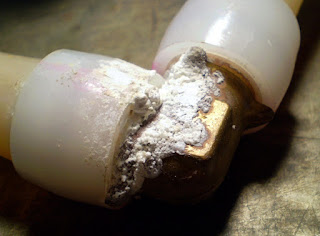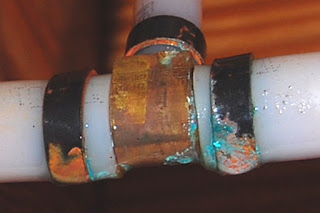Inspecting Cross Linked Polyehtylene (PEX) Pipe


Home inspectors are seeing more plastic supply pipe than ever. The last several new builds I have inspected all have Cross Linked Polyethylene or PEX pipe installed. In addition to the reduced cost of the product, installation is faster. PEX is not intended to be installed like any other pipe, including CPVC. I have seen many contractors install PEX the same as copper or CPVC. The manufactures recommend that only two crimp connections are made for each fixture. One at a distribution manifold (photo above), and another one at the fixture. This way ½ “ pipe can be used for distribution. Each ½ “ pipe is a “home run” to the fixture. Multiple elbows and t-ways should only be used sparingly. A ¾ “ cold and hot supply line is the feed for the manifold. The flow will be adequate using this method. Installing ½ “ PEX like copper pipe may reduce the functional flow at the fixtures. Also there is more probability of leaks because of the additional crimp connections. There are a few important guidelines when inspecting PEX pipe:
- Ensure the PEX tubing is cut square
- Crimp rings should be over the fittings
- A PEX Go Gauge could be used to determine if the crimp is proper
- A non-metallic sleeve should be used if PEX penetrates concrete
- PEX should be protected from sunlight
- PEX should not be bent in a radius smaller than 8 times the outside diameter of the tubing
- PEX should not be pulled tight to allow for thermal expansion of approximately 1” for every 100’
- It is recommended that hard pipe (copper) be used for the first 18” from a hot water heater of boiler
- Supports should be non-metallic and smooth to ensure the pipe is not cut
- PEX can be connected to any type of pipe
Related Articles:
Want To Learn More? Click HERE to Search Our Full Database Of Home Inspector Newsletters.



